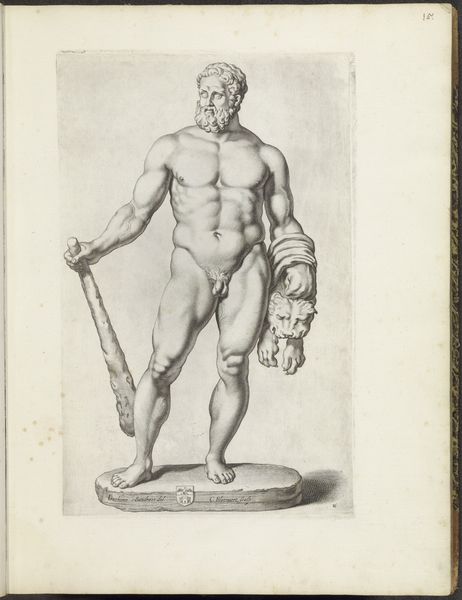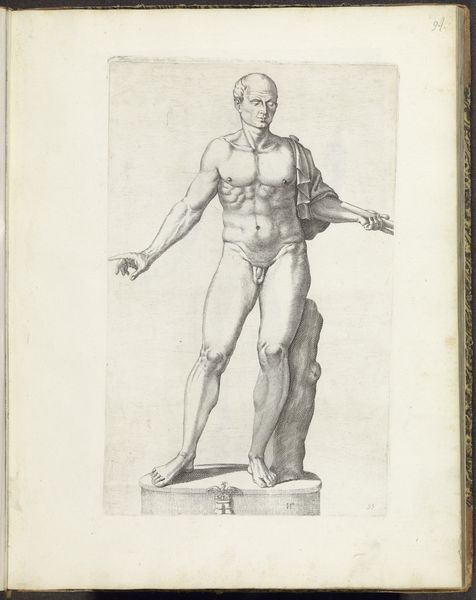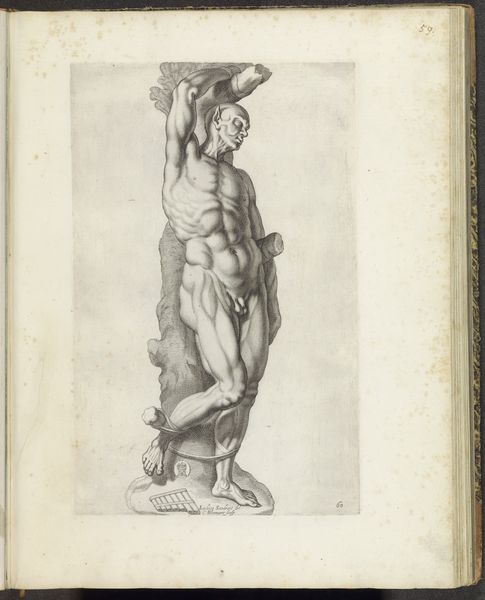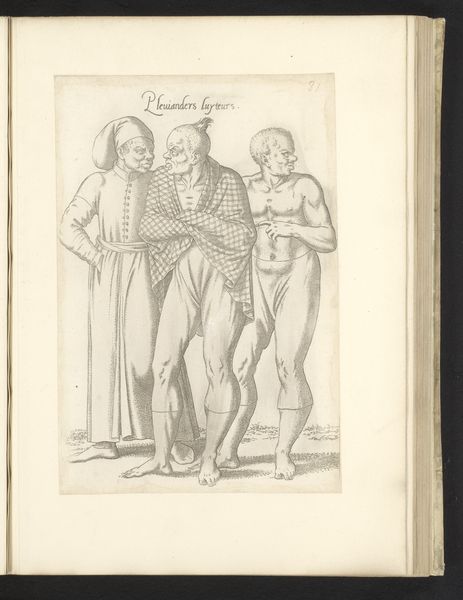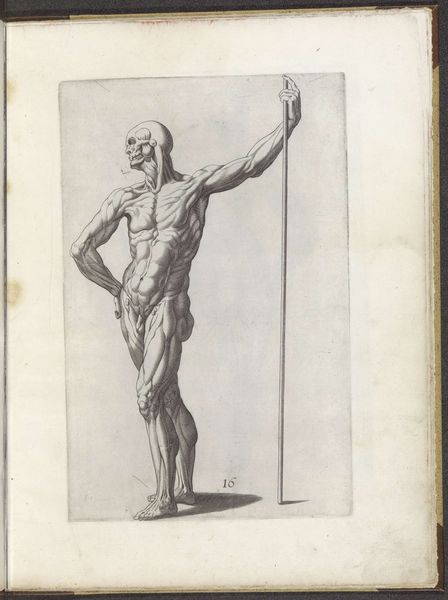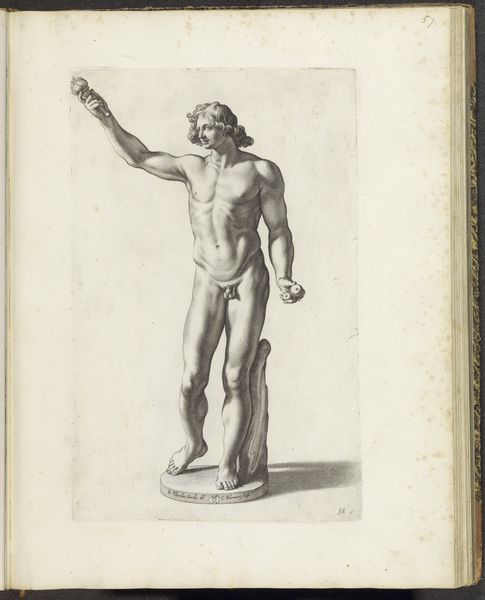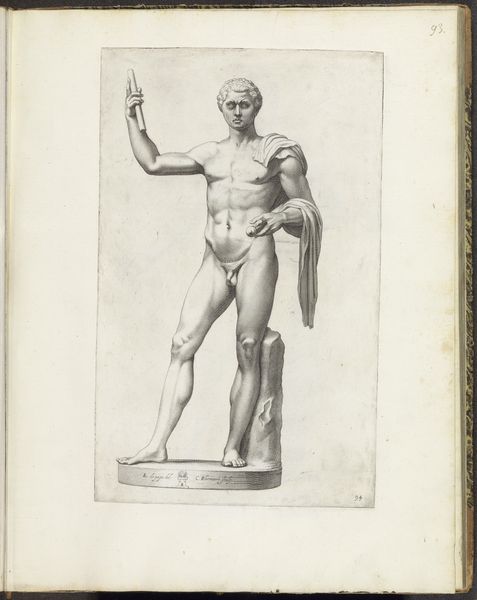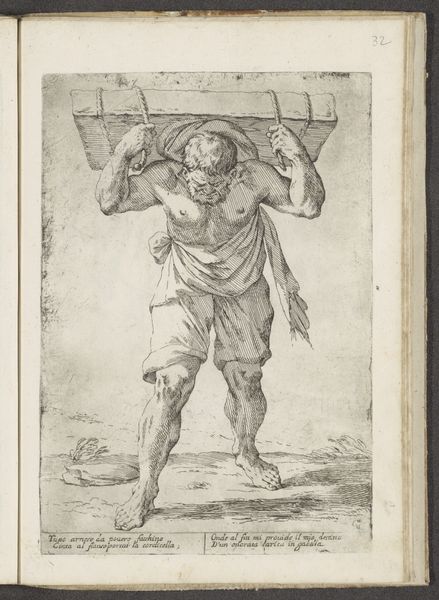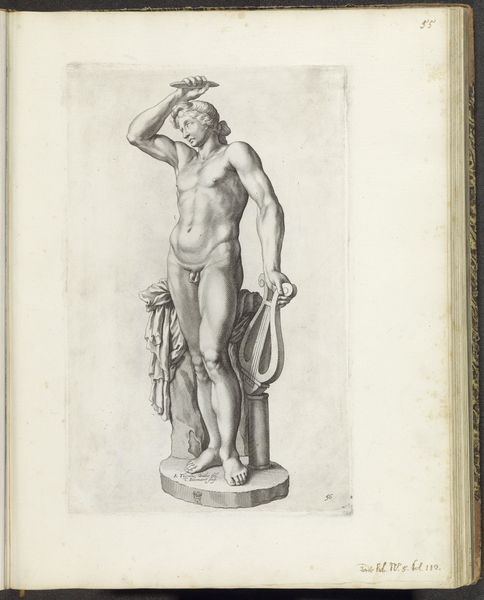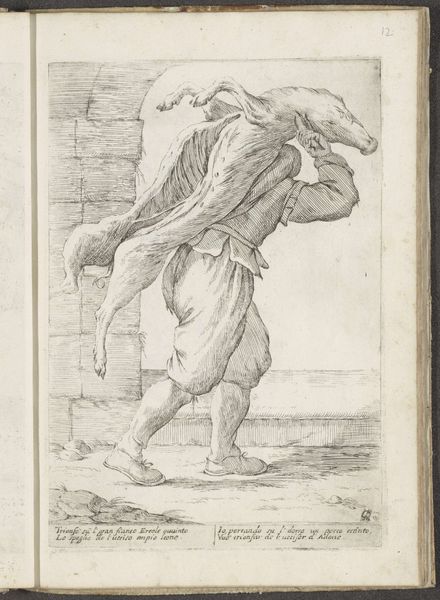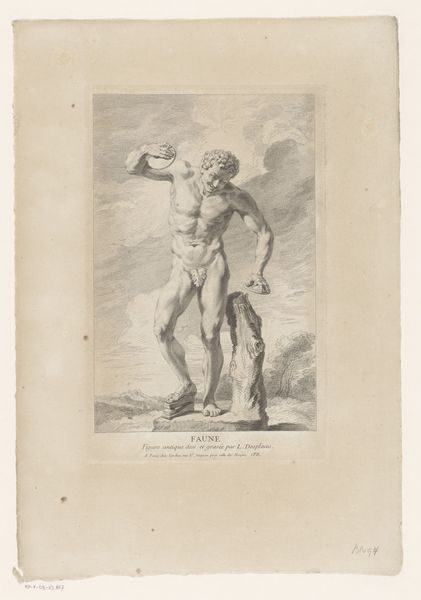
drawing, paper, ink
#
portrait
#
drawing
#
ink drawing
#
figuration
#
paper
#
ink
#
orientalism
#
history-painting
#
academic-art
Dimensions: height 254 mm, width 172 mm
Copyright: Rijks Museum: Open Domain
Curator: Immediately striking! This ink drawing evokes a strong sense of raw power and unsettling intensity. Editor: Indeed. We're looking at a work titled "Turkse geestelijke van de orde der Dervis, of Darvis" attributed to Léon Davent, likely created between 1555 and 1568. Davent captured a Turkish religious figure, a Dervish, using only ink on paper. What do you make of the subject, the Dervish? Curator: What strikes me first is the lens through which this image is presented. This wasn't about documenting, but likely a depiction deeply filtered through a Western European gaze prevalent at the time. His near-nakedness, the fur pelt – it's performative exoticism, not ethnographic accuracy, pointing to orientalist tropes. I wonder what purpose the artist or patron intended with such a provocative depiction? Was this a visual symbol for demonizing those the West labeled as "other," and therefore enemies, reinforcing cultural biases? Editor: Those points are very valid and speak to the socio-political forces at play. The choice of imagery itself, particularly the Dervish, and his presentation speaks volumes. It is important to understand what motivated the creation of works such as this one in their specific context. This piece enters the conversation in regards to the dynamic relationship of cultures during the Renaissance and Early Modern era and their impact and the depiction in the cultural representation that the artist renders on the artwork. What did his audiences in Europe perceive in this character during that specific time in History? How was it used? Curator: Precisely! We cannot separate the artistic intent from its socio-historical setting, can we? Seeing this not just as a portrait, but as an artifact reflecting power dynamics, forces me to ask questions about how representation either perpetuates or disrupts existing power structures. Editor: Absolutely. We need to keep pushing those discussions in art historical analyses. Examining such portrayals for their place in the larger political picture enriches the discussions around pieces of artwork such as this one. Thank you for illuminating the context so effectively. Curator: And thank you for guiding us to explore that context. These old works of art continue to be so relevant.
Comments
No comments
Be the first to comment and join the conversation on the ultimate creative platform.
